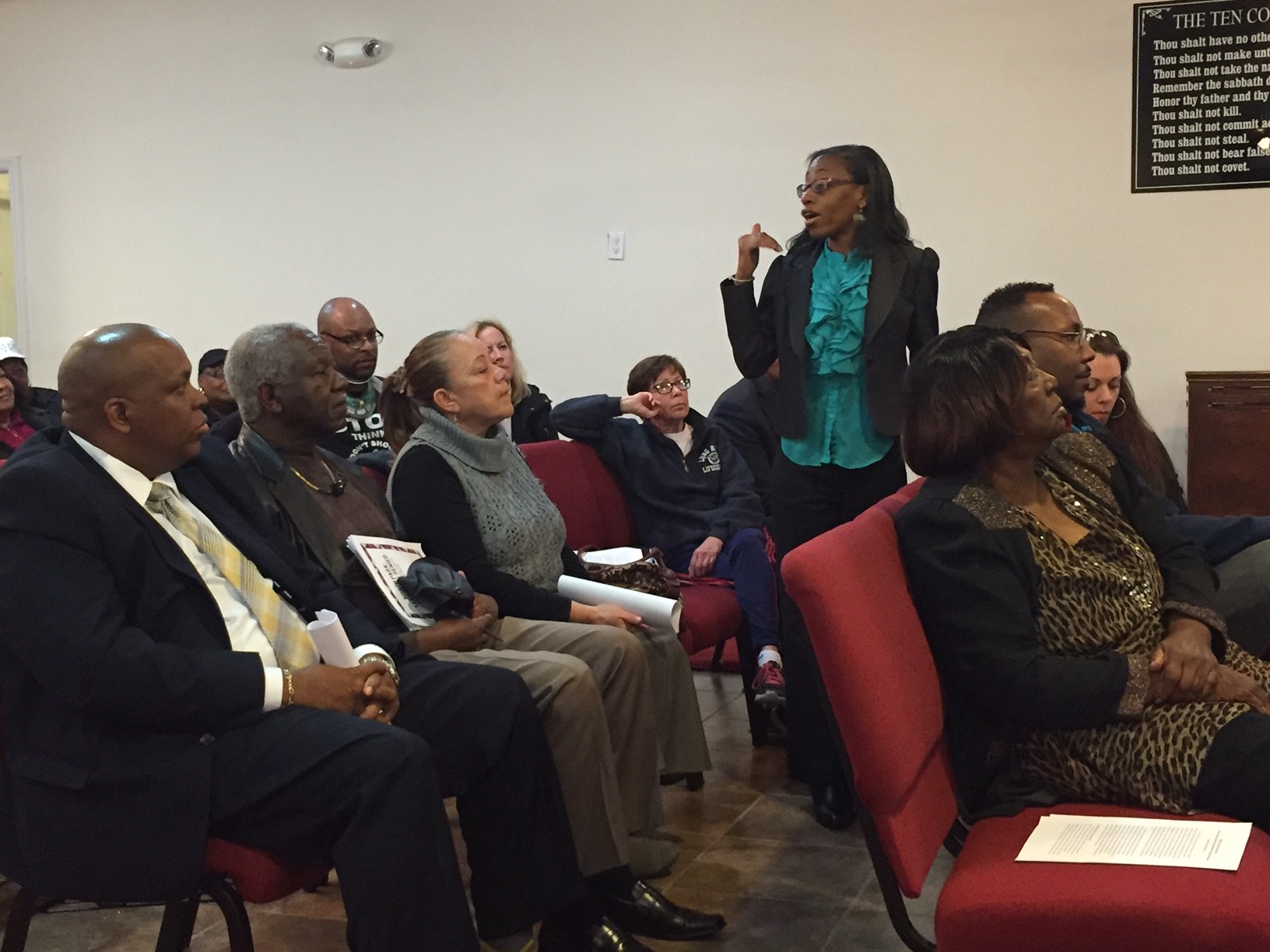HUD finds no mold, disrepair at Channel Park
Councilwoman Anissa Moore calls for additional independent study

A few months after city officials called on the U.S. Department of Housing and Urban Development to investigate alleged neglect of Long Beach’s Channel Park Homes in the wake of Hurricane Sandy, the federal agency reported that it found no disrepair or mold in the housing complex.
An inspection of the 106-unit property on Center Street, in the city’s North Park section, followed the issuance of a report by ERASE Racism, a Syosset-based civil rights organization. The group concluded from a survey of residents — presented to the public in March — that there had been a lack of remediation after the public housing development was flooded in October 2012, and that residents feared potential mold in their homes could pose a health hazard.
But according to a letter from HUD officials to City Council President Len Torres on June 2, six units at Channel Park, which is overseen by the Long Beach Housing Authority, were inspected on April 28, and “no mold was visible” and no other major deficiencies were discovered. The letter added that kitchen fixtures, woodwork, tile and walls were in good condition, and that all of the sheetrock in the units, from the floor to the walls, had been replaced.
“The report that came from HUD is just evidence that there were no findings to the allegations that were brought forward by ERASE Racism,” said Mike Cruz, LBHA executive director. “We have a plan in place to improve and make Long Beach Housing Authority much better moving forward.”
HUD officials also noted in the letter that none of the Channel Park tenants complained of mold or other problems, including those who had previously expressed the need for remediation, Cruz said.
But Councilwoman Anissa Moore said that HUD’s sampling of six units to determine whether the homes need mitigation was “disgraceful,” and she added that she hoped the community would ask for an independent study to inspect more of the apartments.
“I’m disappointed by the findings, but I’m not surprised,” Moore said. “When you inspect six units, you can use the data to support whatever your intentions are. … That’s what is really painful for me as a member of the City Council, that [HUD] didn’t feel that these residents were worth the study by moving forward with more than a six-unit investigation. That’s just unacceptable.”
Moore was among those who spoke up when ERASE Racism presented its findings at Evangel Revival Community Church — across the street from Channel Park Homes — on March 29, describing the situation “environmental racism.” The group’s seven-page report, based on surveys conducted from November 2014 to February 2015, concluded that the necessary maintenance outlined in the Governor’s Office of Storm Recovery’s November 2013 status report to HUD had not been completed.
Specifically, 92 percent of the 66 households that were surveyed reported that floor tiles had not been replaced, 82 percent said that their kitchen cabinets had not been replaced, and 79 percent said that their refrigerator, their stove or both had not been replaced. Current and former Channel Park residents also complained of respiratory problems, citing appliances contaminated with raw sewage during the storm, and subsequent mold growth, as a possible cause.
Olga Alvarez, a public affairs specialist at HUD, told the Herald that the City Council had requested a re-evaluation of HUD’s survey of critical repairs for health and safety concerns and to confirm the 2014 inspection results. Because it was a review of the previous inspection, a smaller percentage of apartments — chosen at random — were sampled, compared with the HUD Real Estate Assessment Center’s original formal inspection. Alvarez added that the LBHA was overseeing the mold testing, by an independent mold-testing company.
Cruz confirmed that the complex’s 12 buildings had been tested for mold, and that only one needed mitigation, which had been completed. In addition, he said, the Housing Authority intended to use some of the $9 million it is receiving from the Federal Emergency Management Agency to buy new generators, raise water and heating systems, and make exterior improvements to concrete, brick walls and roofs.
But Elaine Gross, president of ERASE Racism, said, “All of the deficiencies in post-Sandy remediation identified by ERASE Racism’s study were not adequately addressed in the letter.” She also noted that HUD’s methodology for the inspection was not thoroughly detailed.
Moore said that aside from the LBHA’s mold testing, another independent study would be beneficial to all involved. “This is for everybody,” she said. “This is for those people who live there, those who work within housing, this is for us as a city. We just want to get to the bottom of this, and we want to do this as quickly as possible so we can move forward.”
The Governor’s Office of Storm Recovery said that it had allocated more than $16 million for recovery at Channel Park.
Cruz added that the Housing Authority responds to tenants’ complaints within 24 hours, and that he had not received much of a response following the testing.
“If HUD wants to come in and do more units, if there are tenants that have issues in their unit, come forward and let me know,” Cruz said. “I will personally go and do an evaluation.”





